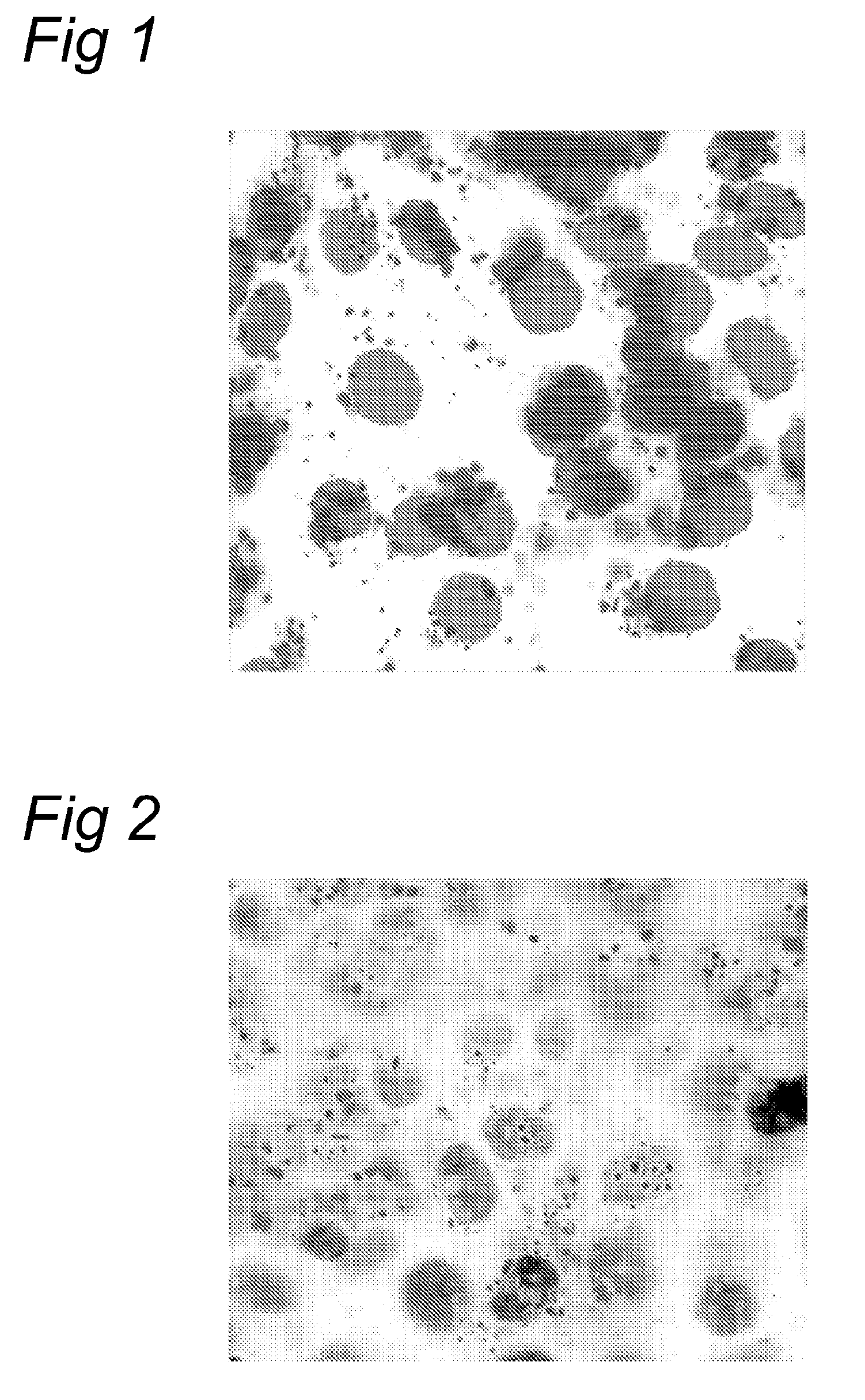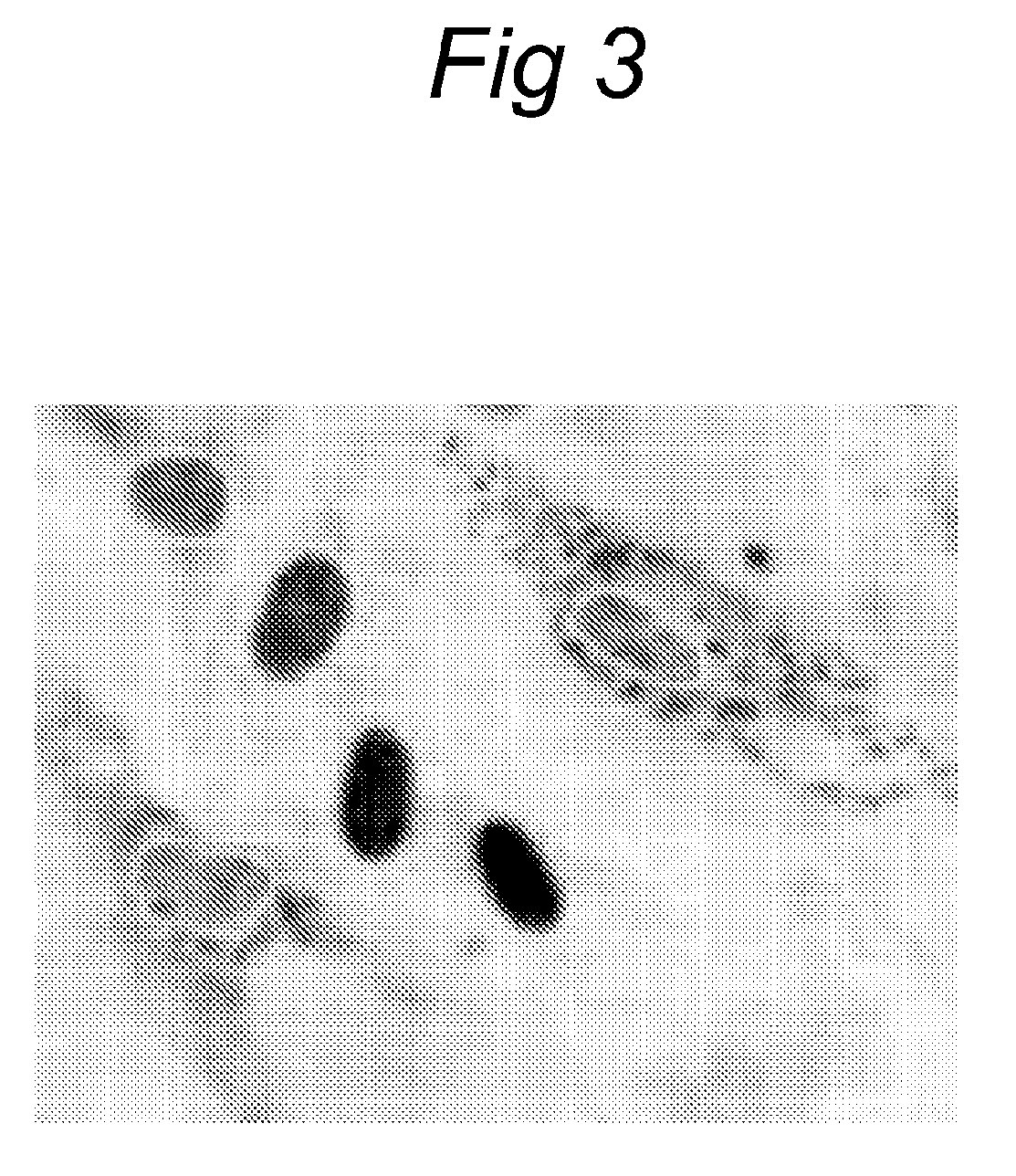Targeted intracellular delivery of antiviral agents
a technology of antiviral agents and intracellular delivery, which is applied can solve the problems of limited treatment options, virus replication cannot be done on its own, and cannot be used in the field of targeted drug delivery, and achieves the effect of specificity and affinity
- Summary
- Abstract
- Description
- Claims
- Application Information
AI Technical Summary
Benefits of technology
Problems solved by technology
Method used
Image
Examples
example 1
Conjugation of Antiviral Agents to Receptor-Specific Ligands
[0134]As an example of antiviral conjugation to receptor-specific ligands, the preferred method of conjugation of ribavirin to CRM197 is disclosed.
[0135]The conjugation of ribavirin to CRM197 is modified from Brookes et al. (2006, Bioconjugate Chem., 17: 530-537), is prepared by reaction of RBV with phosphorus oxychloride (POC13) and trimethyl phosphate (TMP), with progress of the reaction monitored by C18 reverse-phase HPLC. RBV (2 mmol) is reacted with POC13 (8 mmol) and purified water (2 mmol) in 8.3 mL of TMP. Following completion of the reaction (5 h), the product is poured over 20 g of ice and 2 N sodium hydroxide solution is added to bring the pH up to 3. The product is allowed to hydrolyze overnight at room temperature. The hydrolyzed product is extracted with 2×20 mL portions of chloroform. The product RBV-P in chloroform is mixed with 10 g of fine charcoal (100-400 mesh). The reaction mixture / charcoal slurry is ce...
example 2
Conjugation of Receptor-Specific Ligands to Nanocontainers Containing Antiviral Agents
[0138]As an example of antiviral agent containing nanocontainers coated with receptor-specific ligands, the preferred method of conjugation of CRM197 to RBV-loaded PEGylated liposomes is disclosed.
[0139]Liposomes consisted of 1,2-dipalmitoyl-sn-glycero-3-phosphocholine (DPPC) and cholesterol (Chol) in a molar ration of 2.0:1.5. Components were dissolved in CHCl3:MeOH (1:1 v:v). A lipid film was prepared of DPPC (50 μmol) and Chol (37.5 μmol) by evaporation of the solvents under reduced pressure. When necessary dicetyl phosphate (DP) (molar ratio 0.22) was added to the mixture. The lipids were hydrated in 1 mL 100 to 120 mg / mL RBV (or up to >500 mg / ml by heating the solution to 50° C.) in PBS containing 3.5 mol % DSPE-PEG-MAL (Mw 3400) and 3.5 mol % DSPE-mPEG (Mw 2000). After vortexing the vesicles were extruded through two polycarbonate membranes of 200 nm pore diameter (9×), 100 nm (9×) and finall...
example 3
Conjugation of Receptor-Specific Ligands to Carrier for Nucleid Acid-Based Antiviral Drugs
[0143]As an example of a non-viral delivery system for nucleic acid-based antiviral drugs by means of a receptor-mediated uptake mechanism, the preferred method of conjugation of PEGylated CRM197 to polyethylenimine (PEI) is disclosed.
[0144]PEGylated complexes were prepared as follows. PEI (25 kDa, branched, 3.3 mg, 133 nmol) was dissolved in PBS at a concentration of 5 mg / mL. Poly(ethyleneglycol)-α-maleimide-ω-NHS (NHS-PEG-VS, Mw 5000, 266 nmol, 1.4 mg) was added to this solution and incubated for 1 hr at room temperature while mixing. The excess of NHS-PEG-VS was removed by ultracentrifugation (Zebra™ column, Pierce, Rockford, USA). PEI-PEG-VS was used directly for conjugation to CRM197. Hereto, CRM197 (133 nmol, 8 mg in 1.6 mL 160 mM borate buffer pH 8.0 containing 1 mM EDTA.) was modified with 2-IT (2.66 μmol, 183 μl 14.5 mM solution in 160 mM borate buffer pH 8.0) for 1 hr at room temperat...
PUM
| Property | Measurement | Unit |
|---|---|---|
| surface area | aaaaa | aaaaa |
| pH | aaaaa | aaaaa |
| time | aaaaa | aaaaa |
Abstract
Description
Claims
Application Information
 Login to View More
Login to View More - R&D
- Intellectual Property
- Life Sciences
- Materials
- Tech Scout
- Unparalleled Data Quality
- Higher Quality Content
- 60% Fewer Hallucinations
Browse by: Latest US Patents, China's latest patents, Technical Efficacy Thesaurus, Application Domain, Technology Topic, Popular Technical Reports.
© 2025 PatSnap. All rights reserved.Legal|Privacy policy|Modern Slavery Act Transparency Statement|Sitemap|About US| Contact US: help@patsnap.com



